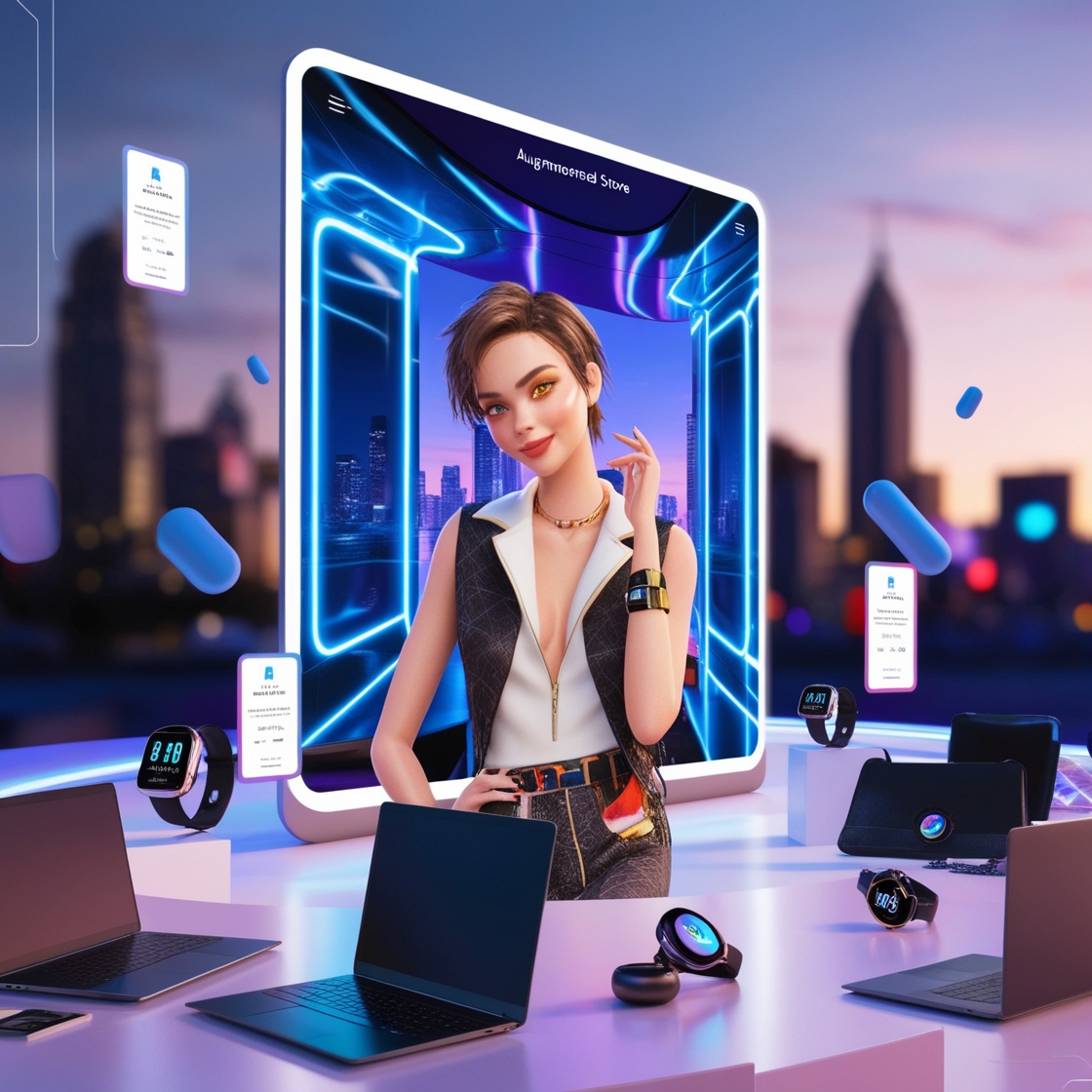Introduction
Augmented Reality (AR) is reshaping the e-commerce landscape by enhancing customer interaction and revolutionizing the way people shop online. Integrating AR technology into online retail not only improves user experience but also optimizes business performance. This article explores how AR plays a pivotal role in driving e-commerce success.
1. Visualizing Products in Real-Time
One of the main challenges in online shopping is the inability to physically interact with products. AR addresses this issue by allowing customers to visualize items in their real environment. Whether it’s trying on clothes virtually or seeing how furniture fits in their living room, AR enables an immersive shopping experience that leads to more informed purchasing decisions. This reduces guesswork and enhances customer satisfaction.
2. Virtual Try-Ons: Elevating the Fashion and Beauty Industry
In sectors like fashion and beauty, AR has
revolutionized the shopping experience with virtual try-ons. Consumers can use their smartphones or other devices to see how clothes, accessories, or beauty products look on them in real-time, eliminating uncertainty. Major beauty brands like Sephora and MAC Cosmetics have implemented AR-powered tools that allow users to experiment with makeup shades or hairstyles. This leads to a more engaging and personalized experience, boosting conversion rates and reducing the likelihood of returns.
3. Enhancing Product Customization
Augmented Reality provides consumers with the power to customize products before making a purchase. Through AR applications, customers can modify colors, designs, and styles to suit their preferences. This level of personalization fosters a deeper connection between the consumer and the product, increasing the chance of a sale. For instance, companies like Nike allow users to customize shoes through AR, offering a more interactive and fulfilling shopping experience.
4. AR-Driven Marketing Strategies
Incorporating AR into e-commerce marketing campaigns enhances user engagement. Retailers can use AR in ads or social media campaigns to create interactive experiences that captivate their target audience. Brands that leverage AR for promotions often see higher engagement rates, improved brand visibility, and more social media shares. This drives traffic to e-commerce websites and improves search engine optimization (SEO) rankings by increasing dwell time and reducing bounce rates.
5. Boosting Customer Confidence and Reducing Returns
By offering customers a chance to see products in context or virtually try them on, AR helps eliminate uncertainty during the buying process. This, in turn, reduces the rate of product returns, which is a common problem in online retail. When consumers have a clearer idea of what they are purchasing, it minimizes dissatisfaction and costly return processes, contributing to higher profits.
6. Seamless Omnichannel Experience
AR enhances the omnichannel retail experience by seamlessly integrating online and offline shopping. For instance, customers can use AR apps in physical stores to learn more about a product, access promotions, or visualize product variations. This kind of cross-channel integration boosts customer engagement and creates a more cohesive shopping journey, which can ultimately lead to higher sales.
7. SEO Benefits from AR Integration
Search engine optimization (SEO) is key to driving organic traffic in e-commerce. Integrating AR can improve your website’s SEO in several ways:
- Increased Engagement: AR keeps users on your site longer, which lowers bounce rates and signals to search engines that your content is valuable.
- Higher Conversion Rates: AR features that improve product visualization lead to higher conversion rates, which may positively impact your site’s authority and rankings.
- Content Richness: AR tools often come with interactive content that can be indexed by search engines, providing additional rich media that boosts your site’s overall SEO.
8. Staying Ahead of Competitors
As AR technology becomes more accessible, early adopters in e-commerce are gaining a competitive edge. Offering AR features can differentiate your brand from competitors by delivering unique, interactive experiences that enhance customer engagement. Businesses that leverage AR will likely see increased customer loyalty, stronger brand awareness, and higher sales figures.
Conclusion
Augmented Reality is more than just a technological trend in e-commerce—it’s a powerful tool for enhancing the shopping experience, driving engagement, and boosting conversions. By enabling customers to interact with products in new ways, AR helps retailers meet evolving consumer expectations. Whether it’s through virtual try-ons, immersive product visualization, or personalized customization, AR is a key driver of growth in modern e-commerce strategies.
Businesses looking to future-proof their e-commerce platforms should consider investing in AR solutions to stay competitive in a fast-evolving retail environment. AR not only improves customer satisfaction but also enhances SEO performance, making it a crucial asset for any forward-thinking e-commerce brand.
